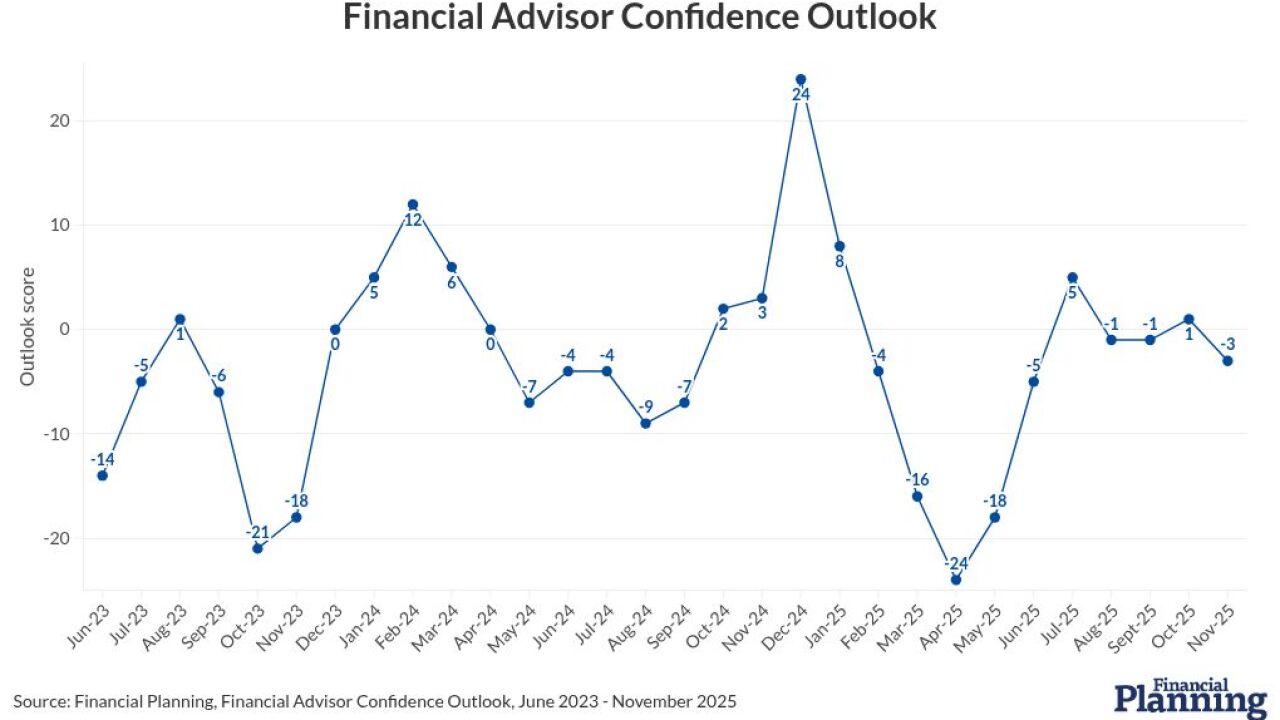Most of the calculators that fund firms offer financial professionals calculate potential investment returns and have become commonplace in the industry.
Broker Village, a financial software company in Fairfield, Conn., has developed calculators that allegedly have a much greater benefit for brokers and financial planners -- and, potentially, no-load fund companies -- by calculating fee structures and compensation.
Broker Village's calculators can perform such functions as comparing fees for different types of products or what an intermediary's total recompense would be if they switched from a partial fee-based structure to a commission-based one. The calculators became available two months ago, and so far, six firms have licensed one or more of them, said Stu Speckman, Broker Village chairman and founder.
American Century Investments of Kansas City, Mo., was the first firm to license the calculators. Manulife Financial of Boston has also licensed one of them, Speckman said. He would not name the other firms because those agreements are still being worked out but said that they would be rolled out in the next several weeks
American Century will offer three of Broker Village's calculators. The product mix calculator displays how a change in product sales will impact an intermediary's future compensation. The lump sum calculator determines what effect a one-time investment from a single client or the aggregation of several client trades will have on compensation. The third calculator American Century will offer shows how payments can be boosted by converting a portion of so-called "back of the book," or dead assets, to fee-oriented products.
"These tools provide a clear, customized illustration of the impact that a wide range of scenarios will have on a financial adviser's book," said David Larrabee, American Century senior vice president of third party marketing and sales. "We want to help representatives visualize and understand the best way to manage their business."
Triple the Money
As just one example, the calculator shows planners how they can earn considerably more money from fee-based mutual funds paying 1.4% even though up-front commissions on stocks or bonds can exceed 4%. Because trailers on transaction-based products can run as little as 25 basis points, they can bring down annual average commissions to as little as 60 basis points. In one case, the calculator shows a planner earning $700,000 in transaction fees turning to managed accounts and mutual fund wrap programs to double their commission to $1.4 million in three years and tripling it to $2.1 million after five.
While a fee calculator might be helpful to advisers, it does not sound like the greatest thing for investors. Although intermediaries are not supposed to sell products based on the fees they will afford them, the calculators could be used that way, said Scott Cooley, a senior analyst at fund tracker Morningstar of Chicago.
"It's not hard to imagine scenarios in which [the calculators] could be abused very badly," Cooley said. "You [could] get a young broker trying to generate the highest fees, especially in this market."
Speckman said a lot of people in the industry have raised this question about potential abuse of the calculators, but he maintains that while some intermediaries might do the wrong thing, the vast majority won't. Brokers have the opportunity to sell on that basis without the calculators, yet most do not, he said.
Larrabee at American Century agrees. "I don't think that will be a problem," he said. "I don't think investment professionals are going to use it to maximize their fees. It's for people to make intelligent decisions. The intent is not to try to help somebody take advantage of investors. I don't think that's how investment professionals will use it."
In fact, Speckman said that the calculators can benefit investors because brokers who typically avoid products with complex fee structures will consider them if they can see that their fees are substantial.
"Once a product is determined to be suitable for the investor, several pricing options often are available, Speckman said. "Representatives have the right to
see how their pay will be affected given the different options. The calculators provide that ability. In fact, many times clients are not presented with perfectly suitable products because brokers cannot figure out how they will be paid."
That scenario happens most often with variable annuities, which have complicated fee structures, but more often than not can garner greater fees than other products would, Speckman said.
"Variable annuities, which have gotten pummeled recently in sales, usually look the best in the calculator," Speckman said. "In my opinion, a big part of the reason for the low sales [of annuities] is that there are so many and [such] complicated pricing options that brokers shy away from them. If the brokers can see the benefit of variable annuities compared to other products, it'll open up a new line of products for investors."
In addition to being a value-added service that fund companies can offer to brokers and planners, the calculators can also act as a wholesaling tool for a firm's salespeople. All 30 of American Century's wholesalers will have the calculators on their laptops. Brokers are much more willing to see how a certain product mix affects their compensation than they are to look at fact sheets that every other firm has, according to Speckman. "It's one way to sit with brokers and help them make their business decisions," he said.
The calculator that displays the effects of moving a portion of one's business to fee-based products almost always shows that fee-oriented products can generate higher fee levels overall, according to Speckman. As a result, no-load firms, like American Century, will find the calculators particularly useful.
"Because [the calculators] favor fee-based products, I could see how American Century would like it because they basically distribute their products [through] fee-based planners,"
Cooley said.
In fact, Speckman recently was in talks with a firm that wanted to license the tool to help promote a new fee-based product it was in the process of launching. However, such a small portion of the fees associated with that product went to the intermediary that the calculators showed that other products would be more lucrative, according to Speckman. "That's not going to help with that sale, but it show's the calculators are unbiased," he said.
Also, when wholesalers sit with intermediaries and use the calculators with them, they get a sneak peak at the intermediaries' books of business, Speckman said. It can be very advantageous for a wholesaler to know if he has been getting 1% or 99% of the intermediary's mutual fund sales," Speckman said.





